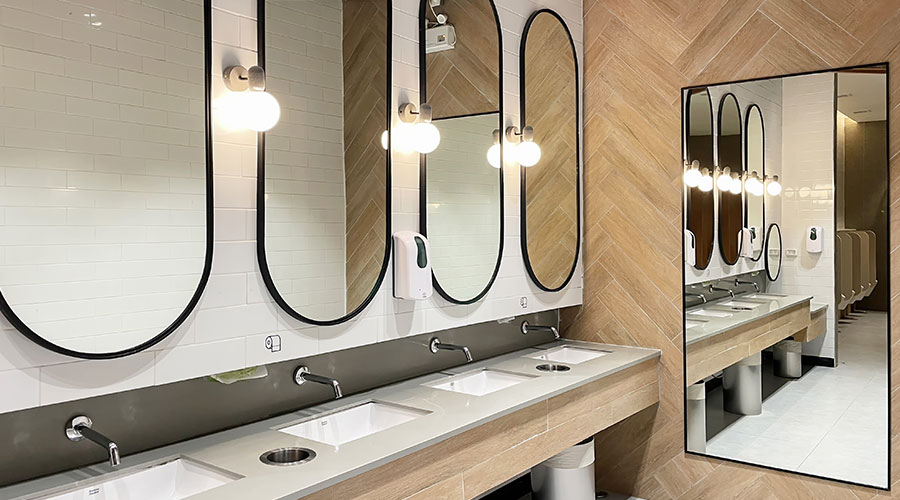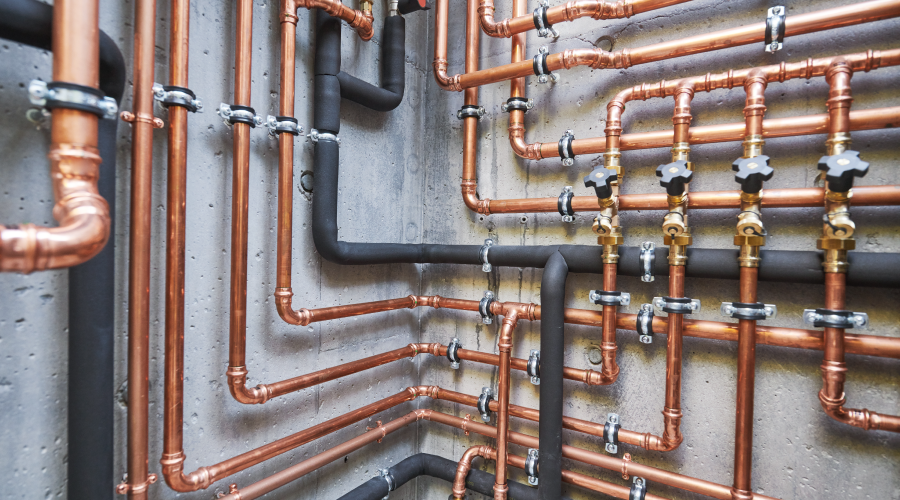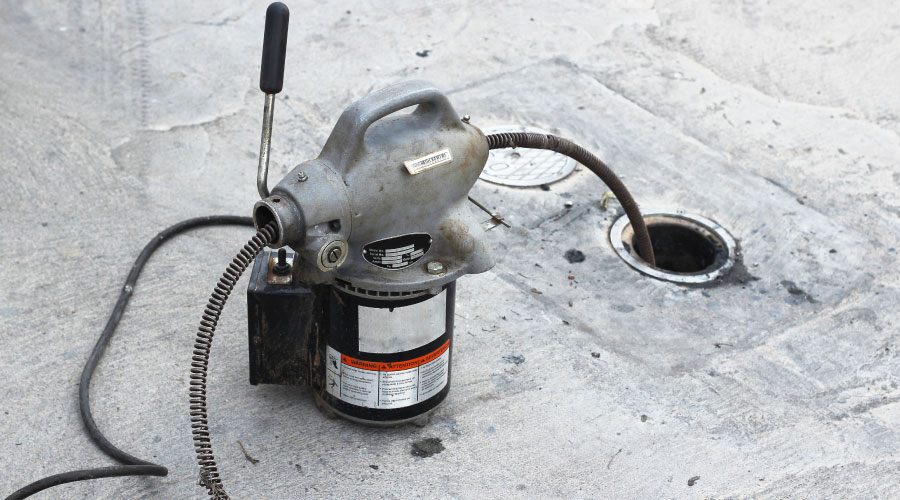Restroom Renovations that Deliver Efficiency and Savings
Upgrades to faucets, flush valves and other fixtures can help managers cut water use and deliver bottom-line benefits to facilities.
By Amy Wunderlin, Contributing Writer
Restrooms are often overlooked in institutional and commercial facilities. While restrooms are a necessary aspect of every facility, they typically are not the first place maintenance and engineering managers look to cut costs.
The unfortunate reality is that outdated, ignored restrooms can waste thousands of dollars every year. Leaks, outdated flush valves and faucets, and old and faulty dispensers and fixtures, are just a few of the common occurrences that cost organizations money in their budgets every year.
The good news is that by prioritizing restroom design and keeping updated on innovations, maintenance and engineering managers can reverse the momentum and even make the case for value creation.
Striving for efficiency
When managers are trying to get the most out of their budgets, it is important that restrooms make a good impression on occupants and visitors.
“The pandemic gave us a great opportunity to actually bring facility operations to the table,” says Matt Weko, managing director of the Work Dynamics consumer goods, media & entertainment team at JLL. “The restroom is the first place people get an impression about the cleanliness, which in so many ways speaks to the overall operations. I would encourage facility managers to take their seat at the table, as it relates to the experience, making a statement out of what's perceived as safe and sanitary.”
The process starts with the initial design.
“The costs and cost implications of how we maintain those facilities is incredibly important, but if you think about that design component … getting the design right, using the materials that will age appropriately are really, really important considerations,” Weko says.
That design element should incorporate everything from fixture count and placement and the quality of finishes to the placement of mirrors, soap dispensers and hand dryers.
“In sports facilities and arenas, particularly high traffic, high energy, high beverage sales, this is where impressions are made,” Weko says. “People will remember the experience positively and negatively and probably not neutrally. We're all competing for consumer dollars today, so the experience that people have in a live event venue is incredibly important.”
Maximizing money
Whether designing a restroom in a new facility, renovating an existing space, or updating a problem area, there are several things to consider to maximize the investment.
The time between redesigns or updates can be lengthy, so the materials, fixtures and decisions made today have to make sense for years to come.
“It's about 12 years between major renovation cycles,” Weko says. “That's a long time for fixture innovation and then water flow innovation in terms of refreshing those facilities. It's also a long time between kind of catching up with code and the consumer preference.”
Weko says managers should take a big-picture approach and answer three important questions:
- What is my audience?
- How should traffic flow?
- What will ongoing maintenance look like?
Focusing on energy conservation is a good place to start. Updating lighting, faucets, ventilation, hand dryers and toilets can have a huge impact on the budget in terms of lowering costs through new innovations that reduce water use and save energy.
It is no secret that bathrooms use a lot of water, and one faulty fixture can be extremely costly. For example, leaky faucets can waste thousands of gallons of water.
Though leaky faucets are costly, they are easy to fix and plan for. The key is to look for them, says Adi Klinghofer, co-owner and vice president of Prestige Distribution.
“A leaky faucet can normally be identified visually, which introduces the primary reason these minor annoyances turn into big problems: Nobody is looking for them,” Klinghofer says in his blog, “Commercial Bathroom Energy Efficiency Checklist.”
Preventing faucet leaks before they occur is even easier by considering electronic or motion-sensing faucets, which are powered by batteries that typically last between two and five years. Though electronic faucets have larger upfront costs than manual faucets, Klinghofer says they can produce water savings of 50-80 percent.
“The cost savings produced by using less water typically recover this additional first cost in one to three years,” he says.
Motion-sensing faucets, hand dryers and toilets also greatly reduce overall energy consumption. Faucets should not be left on accidentally, and motion detection all but eliminates costly leaks and drips.
Klinghofer in his blog also recommends looking into advances in restroom faucets, as thermostatic mixer taps can reduce environmental impact while also saving money.
“High-efficiency taps work by aerating the water, allowing for the same cleaning sensation while using a lot less water,” he says. “In addition, installing flow limiters and low-flow toilets are other considerations that can win big with regards to hitting eco-friendliness targets. Tankless water heaters can also reduce storage costs and waste. Ensuring older water heaters and pipes are well insulated may also add to the benefits.”
Low-flow toilets use 1.6 gallons per flush in comparison to traditional models that use on average 3.4 gallons per flush, Klinghofer says.
“Automatic flush valves for commercial restrooms are also an effective means of reducing water,” he says. “On average, automatic flush valves reduce water use by 50-70 percent when compared to manual flush valves. These units typically cost twice as much as manual valves, but the savings in water use can recover the cost difference in as little as two years.”
The design of high-speed hand dryers also has made progress in recent years, allowing for faster drying time and greater energy savings.
“Not only are they better for the user and not only can you get more users through a busy restroom, but they are vastly more energy efficient than traditional hand dryers,” Klinghofer says. “That is because they use less energy — say 1,500 watts vs. 2,300 watts — and they are on for a shorter period — say 15 seconds vs. 30 seconds.”
When considering restroom efficiencies, managers must remain focused on operations, which means staying current on the design innovations to differentiating the way restrooms are used, ultimately saving money and creating value.
“Understanding the consumer pressure and being part of that value chain is really important,” Weko says. “And then tactically speaking, having a very rigorous process around understanding your consumables … and driving efficiency through that utilization, should give our facilities teams an opportunity to have a voice, so that we can be part of that planning process that drives even greater value. We become really a voice of subject matter expert in those occasions.”
Amy Wunderlin is a freelance writer based in Fort Atkinson, Wisconsin.
Related Topics:












